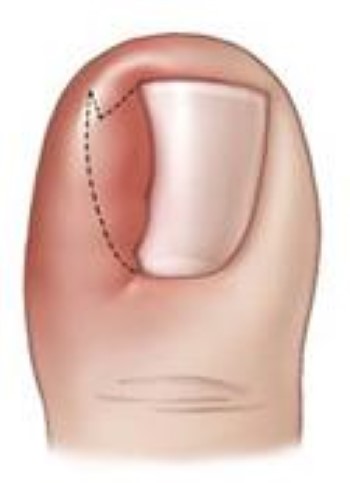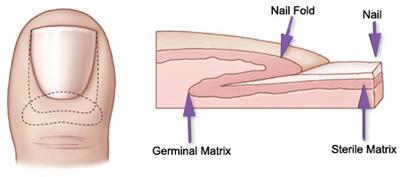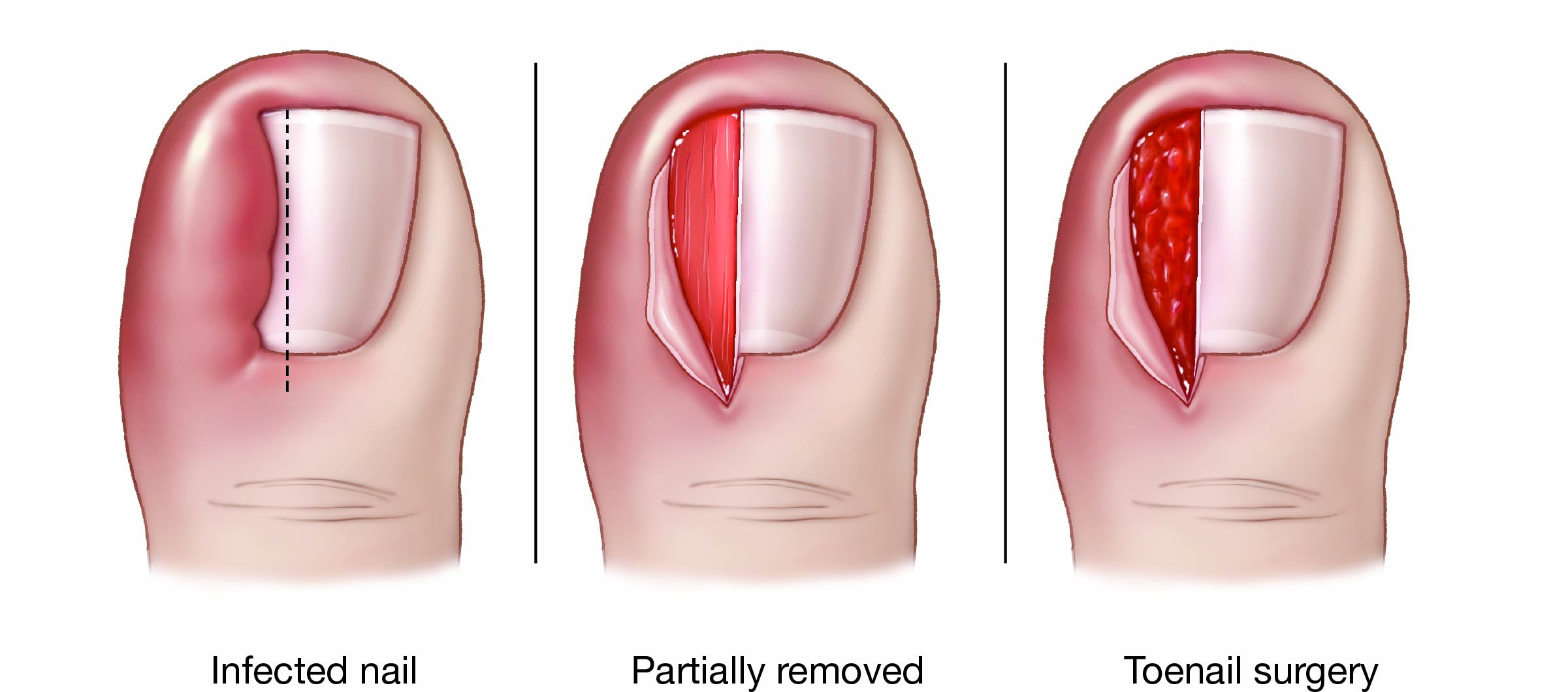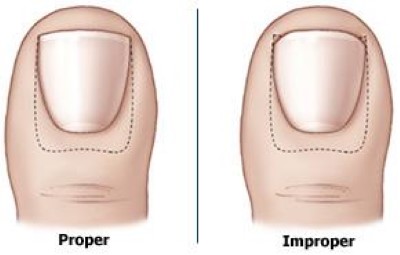Diseases & Conditions
Ingrown Toenail
Ingrown toenails are a common, painful condition — particularly among teenagers.
An ingrown nail occurs when the skin on one or both sides of a nail grows over the edges of the nail, or when the nail itself grows into the nail fold, which damages the skin.
You may be at risk for an ingrown toenail if:
- You trim your toenails too short, especially on the sides of your big toes.
- When you trim your toenails, you taper the corners so that the nail curves with the shape of your toe
- You wear shoes that are too tight or too short in length
Any of your toenails can become ingrown, but the problem more often affects the big toe.
Anatomy
A toenail is made up of four parts:
- The nail plate — the hard portion of the nail that grows out and its trimmed
- The nail fold — the tissue border around the nail plate, which can get infected when you have an ingrown toenail
- The nail bed — made up of the germinal and sterile matrix — is what grows and secures the nail in place
- The cuticle — the soft tissue seal of the nail at its base to the nail fold
Cause
Ingrown nails may develop for many reasons.
- Sometimes people are born with a nail that is too large for the toe.
- Trauma, such as stubbing the toe or having the toe stepped on, may also cause an ingrown nail.
- However, most ingrown toenails are caused by tight shoe wear, or improper grooming and trimming of the nail.
Symptoms
- When you first have an ingrown toenail, it may be hard, swollen and tender.
- Redness, pain and swelling at the corner of the nail may result, and infection may soon follow. Sometimes, a small amount of pus can be seen draining from the area.
Treatment
Nonsurgical Treatment
Ingrown toenails should be treated as soon as they are recognized. If they are recognized early (before infection sets in), home care may prevent the need for further treatment:
- Soak the foot in warm water 3 to 4 times daily.
- Keep the foot dry during the rest of the day.
- Wear comfortable shoes with adequate room for the toes. Consider wearing sandals until the condition clears up.
- You may take ibuprofen or acetaminophen for pain relief.
- If there is no improvement in 2 to 3 days, or if the condition worsens, call your doctor.
You may need to gently lift the edge of the ingrown toenail from its embedded position and insert some cotton or waxed dental floss between the nail and your skin. Change this packing every day.
Surgical Treatment
If there is a lot of inflammation, swelling, pain, and discharge, the toenail is probably infected and should be treated by a physician (see right image below). You may need to take oral antibiotics and the nail may need to be partially (see middle image below) or completely removed .
The doctor can surgically remove:
- A portion of the nail
- A portion of the underlying nail bed
- Some of the adjacent soft tissues
- Even a part of the growth center
Surgery is effective in eliminating the nail edge from growing inward and cutting into the fleshy folds as the toenail grows forward.
- If you are in a lot of pain and/or the infection keeps coming back, your doctor may remove part of your ingrown toenail (partial nail avulsion). Your toe is injected with an anesthetic, and your doctor uses scissors to cut away the ingrown part of the toenail, taking care not to disturb the nail bed. An exposed nail bed may be very painful.
- Removing your whole ingrown toenail (complete nail plate avulsion) increases the likelihood your toenail will grow back deformed. It may take 3 to 4 months for your nail to regrow.
- Permanent removal of the nail may be advised for children with chronic, recurrent infected ingrown toenails.
Prevention
Unless the problem is congenital (you are born with it), the best way to prevent ingrown toenails is to:
- Protect the feet from trauma.
- Wear shoes and socks with adequate room for the toes.
- Cut toenails straight across with a clean, sharp nail trimmer without tapering or rounding the corners.
- Trim the nails no shorter than the edge of the toe.
- Keep your feet clean and dry at all times (except when bathing, swimming, or doing other activities in the water).
Contributed and/or Updated by
Peer-Reviewed by
AAOS does not endorse any treatments, procedures, products, or physicians referenced herein. This information is provided as an educational service and is not intended to serve as medical advice. Anyone seeking specific orthopaedic advice or assistance should consult his or her orthopaedic surgeon, or locate one in your area through the AAOS Find an Orthopaedist program on this website.










